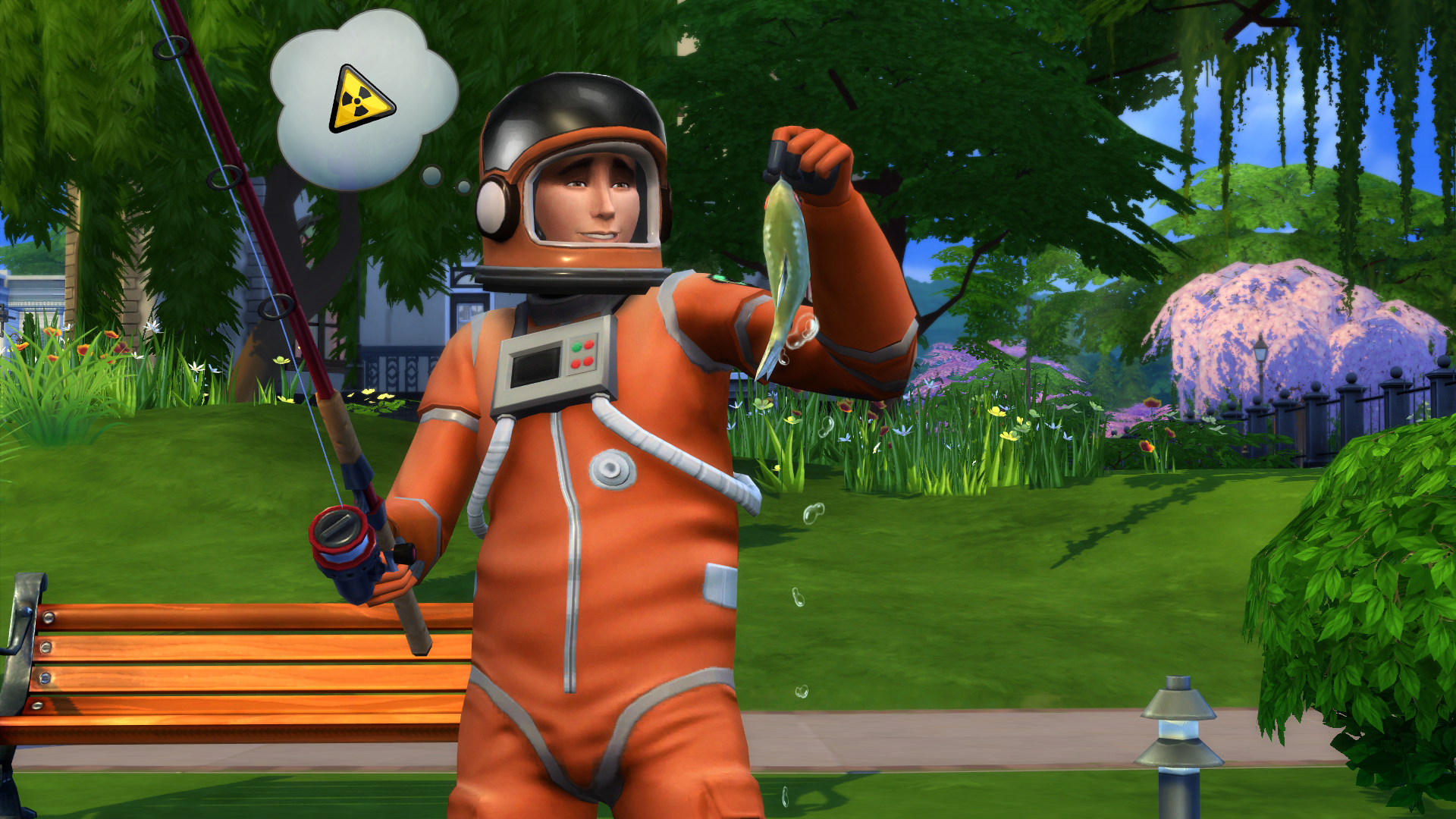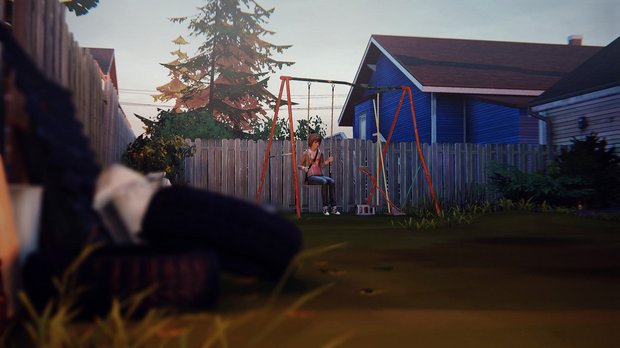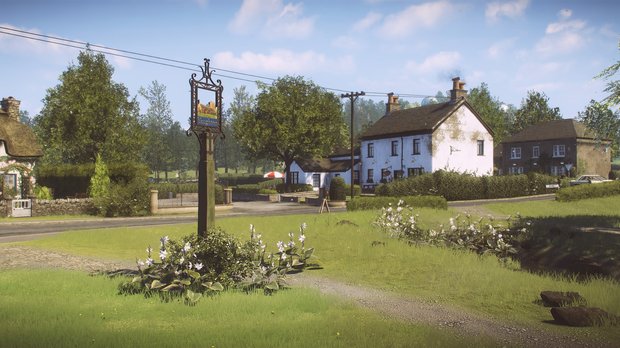I always believed I played games for one reason; to experience things unavailable to me in real life. When it comes to full-blown escapism, there's no better medium than games at offering it. Lately, however, I've been seeking a different kind of escape. I cruise through GTA 5's Los Santos, gawping at Vinewood houses, thinking how much I'd like to live there. I boot up ArmA3's Altis and wander through its idyllic island villages, imagining I have a coffee in one hand and a sugary pastry in the other. The fantasy worlds I crave no longer have dungeons and castles in them, but diners and drive-ins, pubs and petrol stations.

What I crave is the joy of virtual suburbia, the pleasure of quaint villages and sleepy, elm-lined streets, the buzzing of lawnmowers in front lawns, the twittering of birds in well-pruned hedges. Unfortunately, such locations are not easy to find in games. They're usually part of a larger cityscape like GTA5's Los Santos; a side-dish to the main event of criminal car-chases and vigilante shootouts. Alternatively, they're given a twisted context. Everyday locations like schools and nurseries are almost exclusively reserved for horror games such as Condemned or ZombiU, while the grotesque post-apocalyptic world of Fallout is rooted in the middle-class, aspirational values of 1950s America.
For a long time, the only dedicated depiction of suburbia in gaming was The Sims, offering a more plausible and attainable fantasy of enjoying everyday activities, pursuing traditional life goals and, of course, buying lots of objects to fill your house with. The Sims’ portrayal of suburbia is brazenly consumerist, embracing the exact same values that Fallout satirises. I can see the appeal of this, especially so lately. Living on a low wage in a country where austerity politics still bite the ankles of the economy like an angry Rottweiler, the idea of being able to jump into a game and just buy all of the nice stuff is intensely attractive.

Although the Sims lets players enjoy a financial stability that is worryingly fantastical for a growing number of people, it lacks another, far more important component of suburban fantasy - community. It does have a community in the form of its customisable neighbourhood, but the game's relationships and social interactions are extremely simplistic. Its Sims posses an eerie, Stepford Wives quality when they talk to one another in their nonsense language.
Within the last few months two games have emerged that both provide a far more detailed and nuanced suburban fantasy to immerse yourself in: DontNod's Life Is Strange, and TheChineseRoom's Everybody's Gone to the Rapture. Both games share themes associated with an aesthetic style known as Suburban Gothic. Pioneered by David Lynch in works such as Twin Peaks, Suburban Gothic generally explores social anxieties that emerge as a consequence of mass urbanisation, the squeezing of humanity together in tighter and tighter spaces and the perceived loss of innocence and individuality which this collectivism entails.
Usually, Suburban Gothic does this by introducing a supernatural force into close-knit community and exploring how it tears through all those delicate and closely-bound social threads. Of course, this is only effective if the community being surgically dismantled is convincing in the first place, a place where the audience would happily reside.

Like Twin Peaks, both Life is Strange and Everybody's Gone to the Rapture draw you in with a mystery, and then make you want to stay through their brilliant realisations of suburban (or should that be village, in the case of Rapture?) life. Life Is Strange resonates of Lynch's work particularly strongly. Its seaside town of Arcadia Bay conceals numerous dark secrets and supernatural goings on, and the game's story tackles some very dark subject matter, littered with difficult choices the player is forced to make.
Weekly digests, tales from the communities you love, and more
But Life is Strange is equally filled with quiet moments of joy and peace. Each episode includes long shots of travelling through Arcadia bay, showing off the sleepy town at different times of day. Meanwhile, its two main characters, Max and Chloe, frequently share warm, intimate experiences, like watching the sunset on a bench beside a lighthouse, dancing in Chloe's attic bedroom as sunlight filters through the widow, or chatting over Max's time-reversal ability in a bustling diner.

These interactions are a vital part of Life is Strange's depiction of suburbia. The game is deeply anxious about the importance of communication and the impact it has on people's lives. Max constantly frets about how her decisions might be interpreted by others, using her time-manipulation ability to backtrack and explore all possible outcomes of her actions before settling on a particular course. Moreover, the major sticking point in Max and Chloe's relationship is Max's lack of contact with Chloe during her five-year absence from Arcadia Bay. Whenever tension sparks in their friendship, it's always to do with Chloe's worries over Max abandoning her once more.
Life is Strange's concerns about community and communication reflect these aspects of our lives are changing in the real world. My own daily interactions are becoming distanced by technology. I increasingly talk to friends and relatives through various types of screen and less and less face-to-face. Life Is Strange even tackles this problem of technological convenience directly, and in a fascinating way. Devices like smartphones and laptops are common elements in the story, but they're nearly always used to set up face-to-face meetings, rather than as a replacement for talking in person. The game demonstrates the importance of direct social interaction and the value of maintaining close relationships, even when it isn't always convenient and is occasionally outright painful.
Everybody's Gone to the Rapture has much to say about community and communication too, but rather than emphasising the importance of these things directly, it instead presents an extreme scenario in which these things are no longer available. Its quaint village of Yaughton is the idyllic example of British country life, with its whitewashed pub decorated with hanging flower baskets, and its brick-built detached houses surrounded by verdant hedgerows.

But Yaughton is devoid of its most important aspect: people. In Yaughton, communication between people has been distanced in the most extreme way possible. There's only one soul left in the village, and they can only interact with fragments of other people, like reading posts on a Facebook wall. Where Life Is Strange is a celebration of community, embracing both its positive and negative aspects, Everybody's Gone to the Rapture is an obituary for it.
In their own ways, both games show that the joy of virtual ‘suburbia’ is as much in its people as it is in its place, the bonds of community that appear from such a specific network of individuals. It lets us indulge in their desires and reflect upon their fears, to partake in their lives by proxy. This is also, I believe, why suburbia is so rarely depicted in gaming. Games excel at depicting place, but people are far more complicated. Games like Life is Strange show they are improving, however, and I fully anticipate that the virtual neighbourhood will be expanding considerably in the years to come.
Rick is the Games Editor on Custom PC. He is also a freelance games journalist whose words have appeared on Eurogamer, PC Gamer, The Guardian, RPS, Kotaku, Trusted Reviews, PC Gamer, GamesRadar, Rock, Paper, Shotgun, and more.


